Architectural features of Paragoda Old Temple, full of various carvings and paintings.
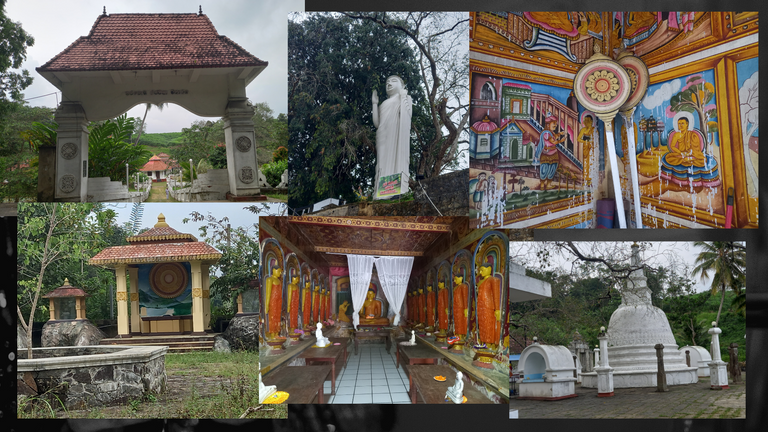
Hi my fellow Architecture lovers,
What's up guys? Greetings from Sri Lanka.Last Sunday afternoon, as I was free, I decided to visit another ancient temple in Sri Lanka. There was no doubt about the journey as the weather was good. However, these days afternoon is the time when it rains in Sri Lanka. However, the journey started with optimism. This is not just a tour. It is a step taken by me to explore the characteristics of past Buddhist architecture and gain knowledge and present it on this beautiful stage. This is intended to present information about the Paragoda Raja Maha Temple located in a quiet environment very close to the town of Imaduwa in the southern province of Sri Lanka.
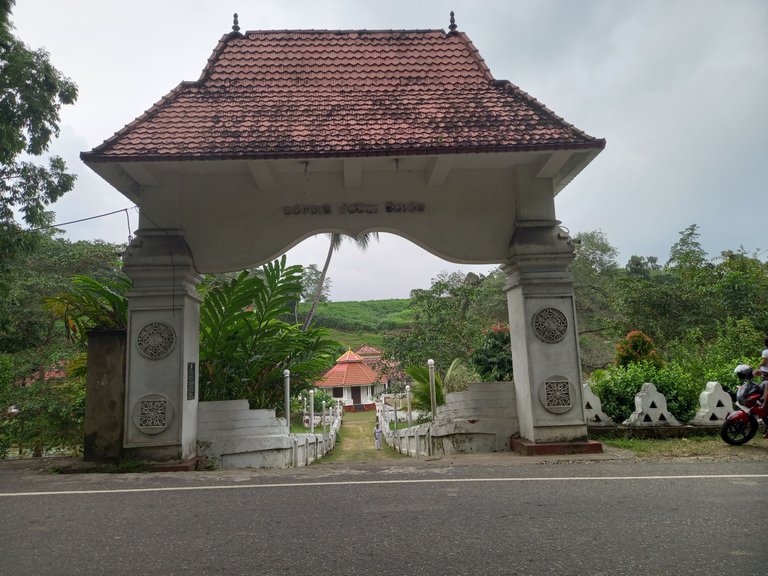
*History says that this old temple, located on the Galle-Akurassa main road, was built during the reign of Devanampiyatissa, who reigned in the past. Although the shape of the roof above the entrance door is similar to the others, it can be mentioned that the width is more. But no animal or god is entered in this gate. And it is surprising that the sun and the moon are not included.
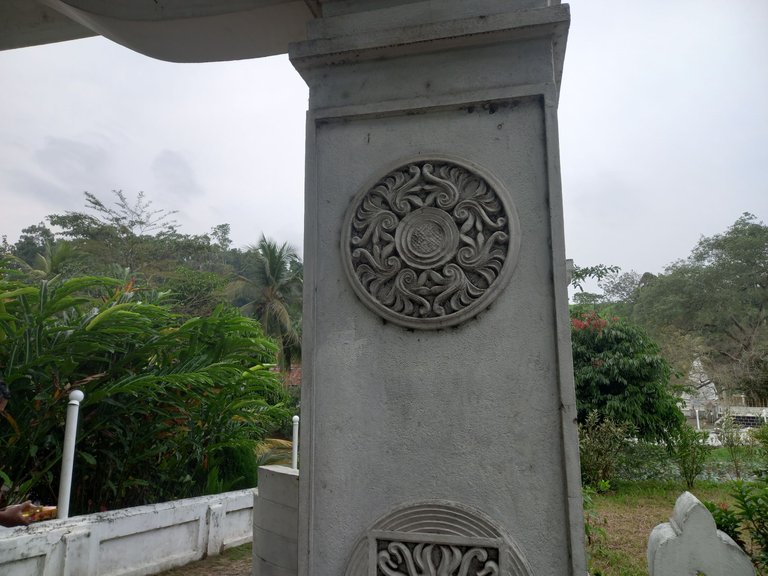 | 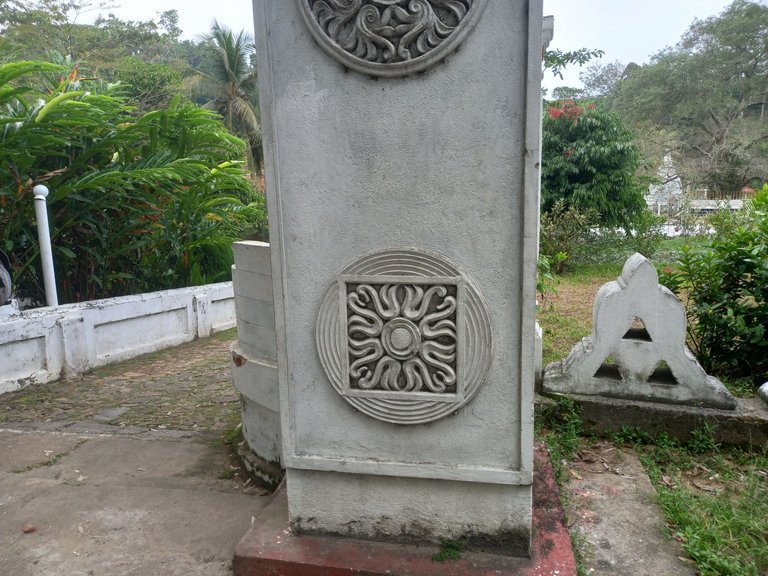 |
|---|
Two types of carvings were carved into the pillar on either side of the entrance. On closer inspection, it was seen that the engraving below is a combination of swans. Above was a past Buddhist carving carved with plants and vines. Both these types of carvings can be seen in some places of the temples built in the past.
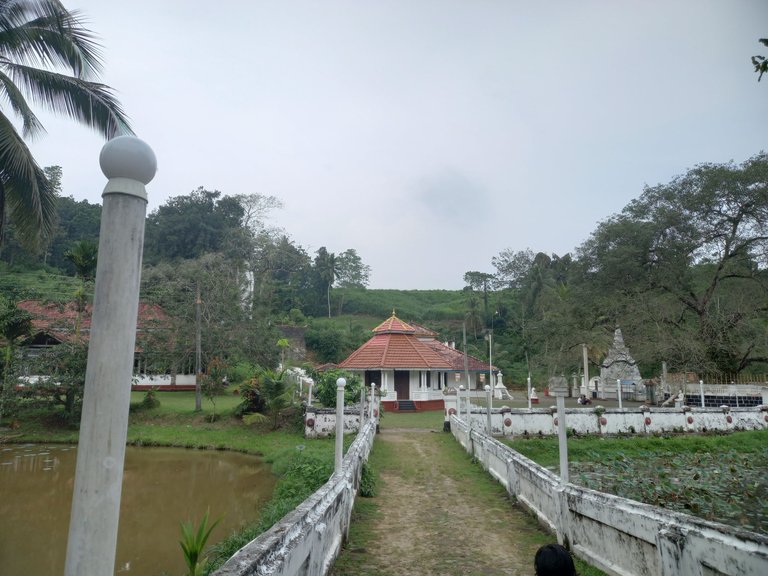
Along with the entrance, a wall was built on both sides. It covers the entire temple grounds. Although there are two lakes on both sides, this may have been one lake in the past. It is conceivable that the center of the lake may have been used for the construction of the road.
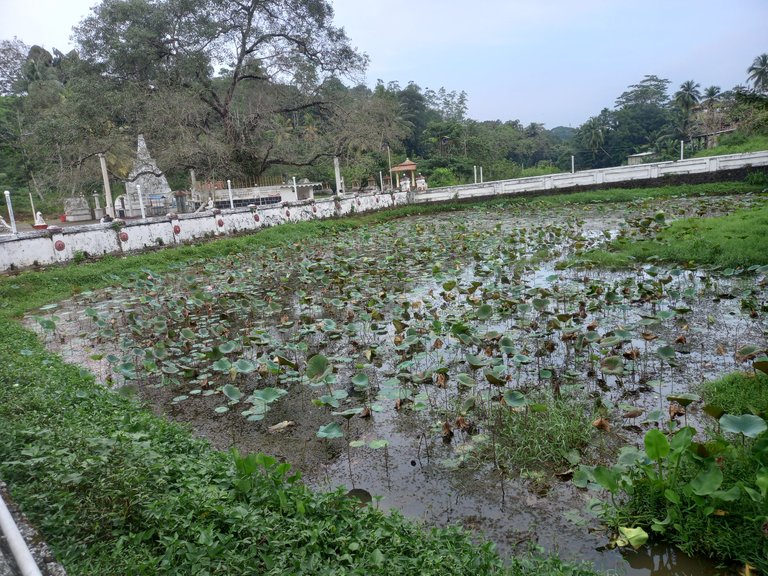
The lake, which is currently without any maintenance, has become dilapidated. There were many flowers that grow in the water like lotuses and lilies, but they did not bring much decoration. If there was proper maintenance, this lake would surely bring a shine to the temple. It can be imagined from the current vitality that this lake was well maintained in the past. The fact that weeds are growing on both sides is proof that destruction is on its way.
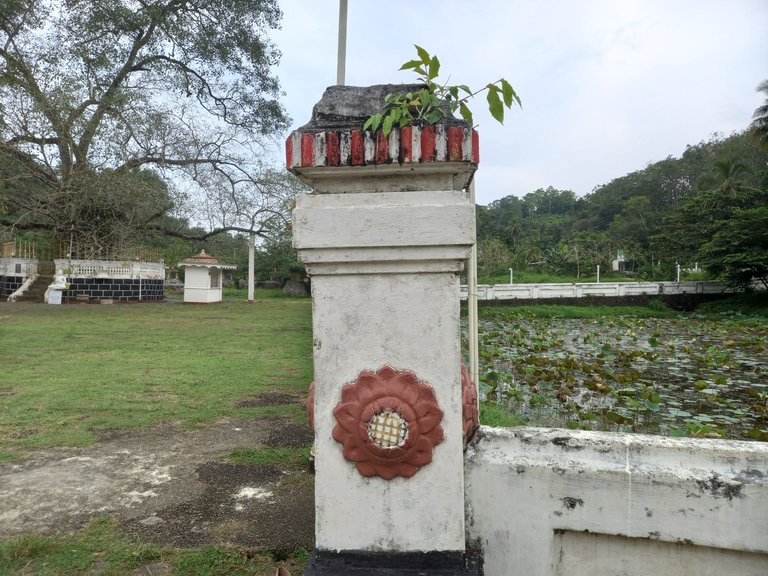
When entering the Paragoda old temple site, you can see two small pillars on both sides. A mixture of white and red is painted on top of it. A wild tree was also forming above. If it is not removed quickly, the pillar will explode and be destroyed. The lotus flower emblem is engraved on all four sides of the beam. The lotus flower is known as the symbol of purity.
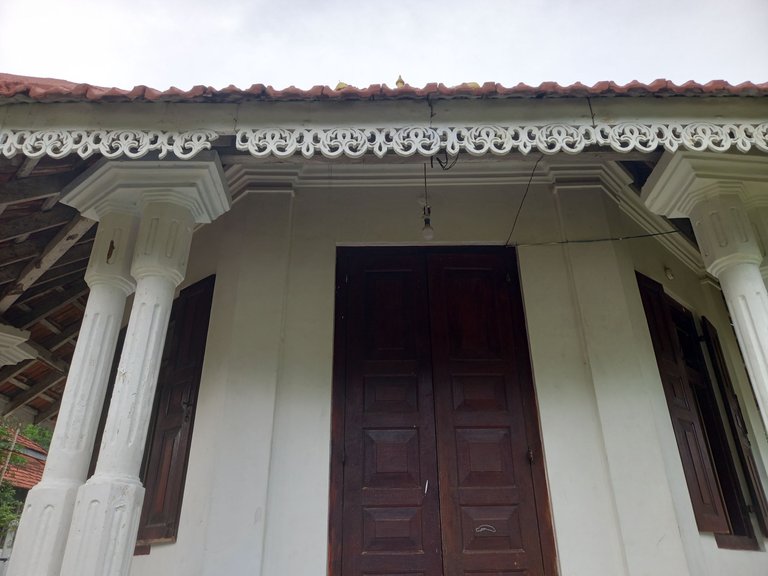
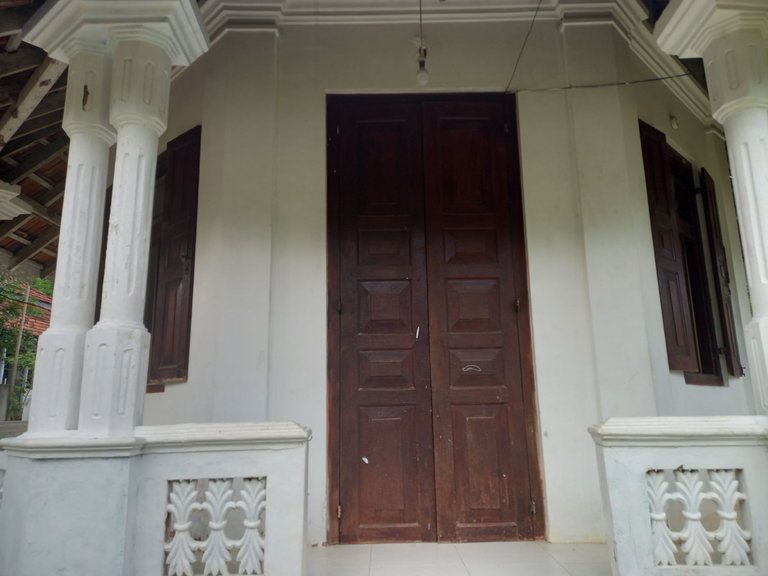 | 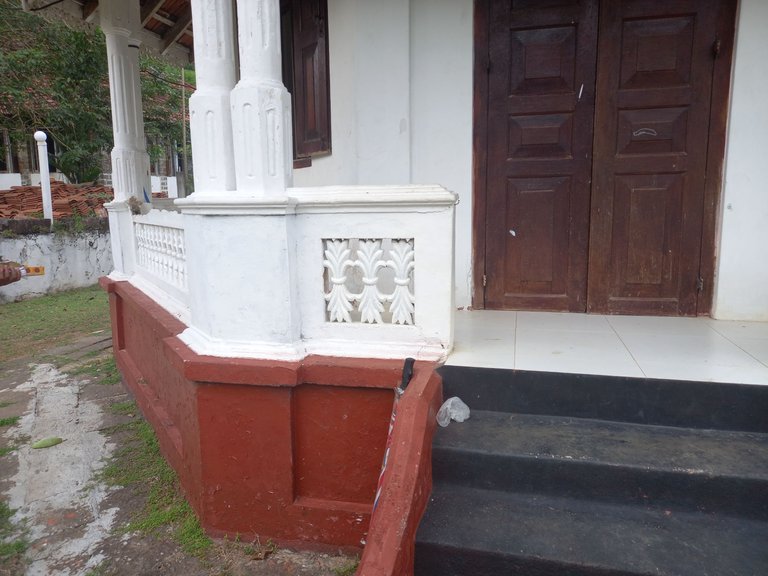 |
|---|
Looking at the architecture of the roof, the floral motifs around the building are made of wood. They are painted white. Such floral motifs are usually seen in many temple buildings. Only the shapes can rarely change. General shapes of pillars are seen. The doors and windows appear to have been recently constructed.
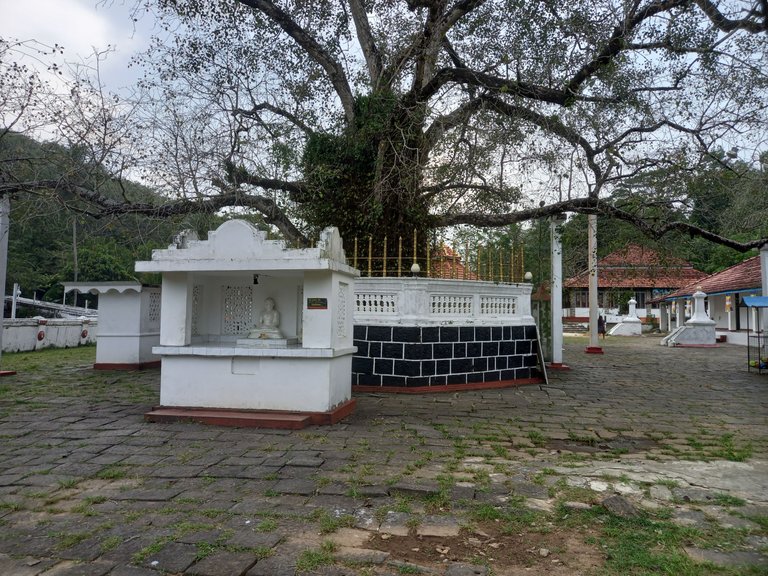
Then we went towards the historical Bodhi tree. We still make offerings to the Bo tree, which performed a great mission to attain Buddha's enlightenment. The Bo tree in Paragoda temple is very old. It is said that this tree was planted when the temple was built. It is surrounded by a gilded fence. Many devotees come to Paragoda Parana Temple to perform Bodhi Pooja. From the past to the present, the devotees have faith that if a wish is made here, it will be fulfilled. A wall has been made by drawing a pattern of black stone below the Bo tree.

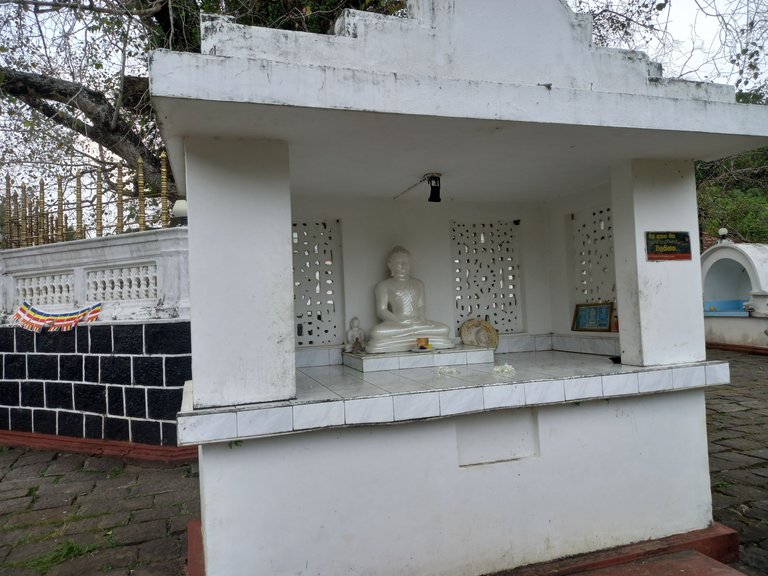
Several small Buddha booths have been established around the Bo tree for worship. They are generally constructed and have some special features. The upper shape of the chamber shows the shape of the center of a stupa in Sri Lanka. Buddha image is placed in the ceramic brick covered area. Behind it are mounted simple carved motifs.
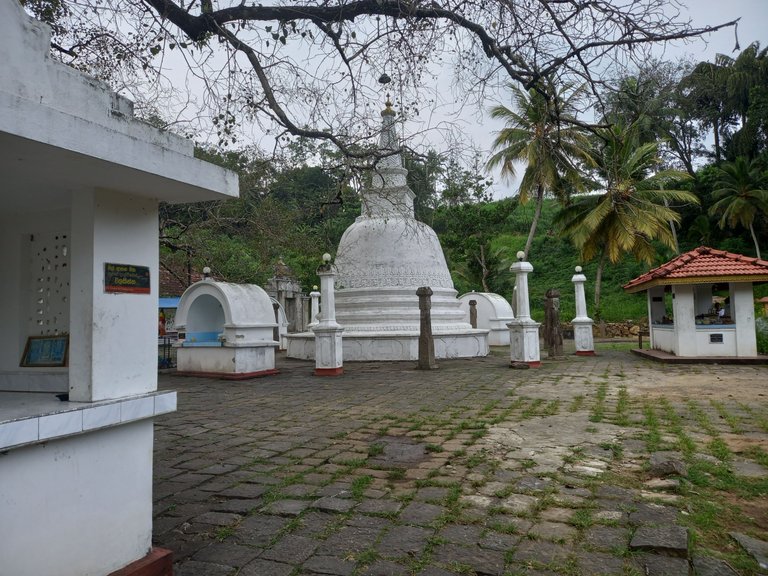
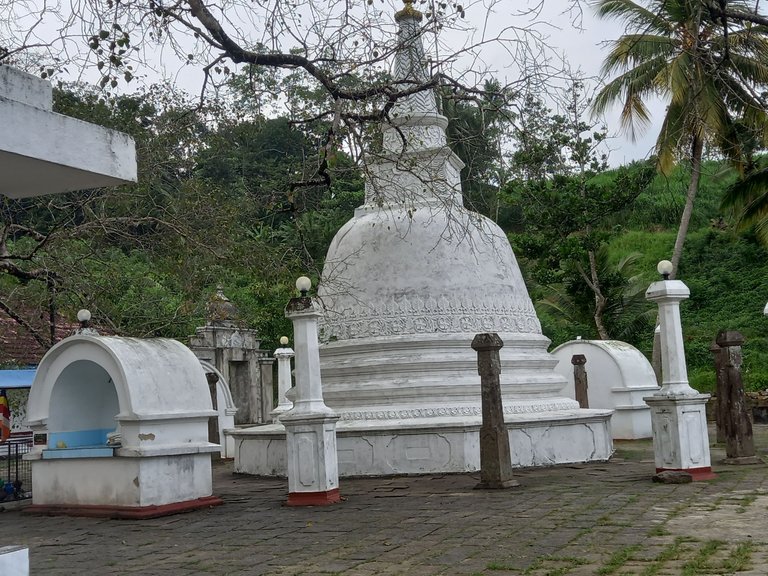
Then we went to Paragoda Parana Temple Dagaba. There were different types of designs on the top and bottom of the dagaba. A design similar to the shape of letter V at the top is engraved with the shape of leaves in the center and the shape of branches with flowers below it. On closer inspection, along with the newly built concrete pillars, several stone pillars established during the previous reign could also be seen. Carvings from the Anuradhapura period can still be seen on these stone pillars, erected during the reign of King Devanampiyathissa. Unlike today's concrete pillars, stone pillars are still strong.

When I looked back at the main road, I saw that there was a separate exit from here. Accordingly, there are two ways to enter and exit the Paragoda Temple.
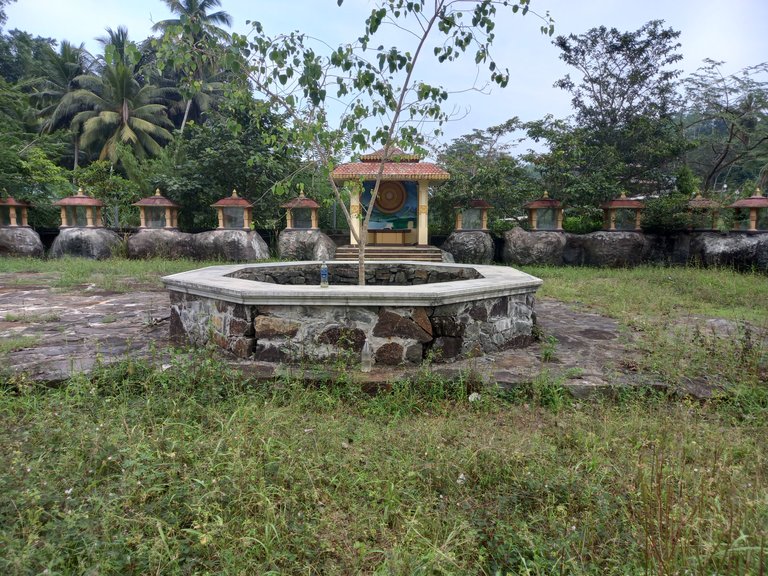
On one side of the temple grounds, in a weedy ground, we could see other wonderful architectural elements. As he took off his shoes and entered the temple, he could not enter the place because of the thorny plants. A sapling of the main bo tree is planted in a black stone foundation. It is mentioned that there were twenty eight Buddhas in the history of our Buddhism. The way the booths for the twenty eight Buddhas have been built on the rocks is surprising.
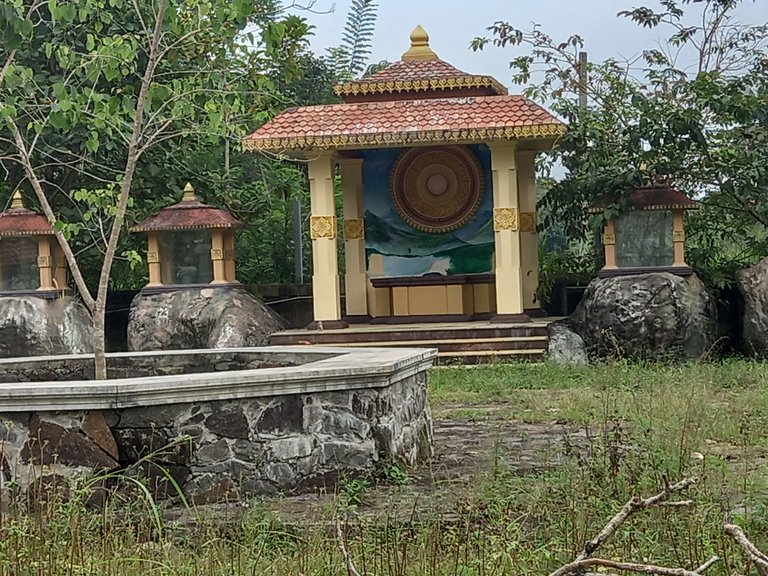
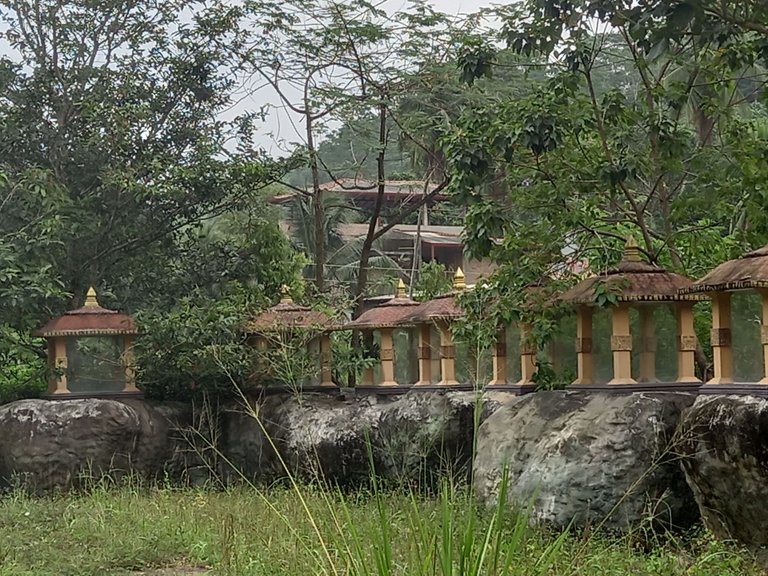
These twenty-eight small buildings with four pillars painted in yellow with floral motifs in gold have the same shape. The shape of the roof follows traditional Buddhist architecture and the top of the roof displays a golden stupa. Below the roof, bo leaf-shaped motifs are made of wood and fixed. Built on a black stone cliff, these cottages display the amazing architecture of the time. If I really had to go near it, I would have presented it more clearly.
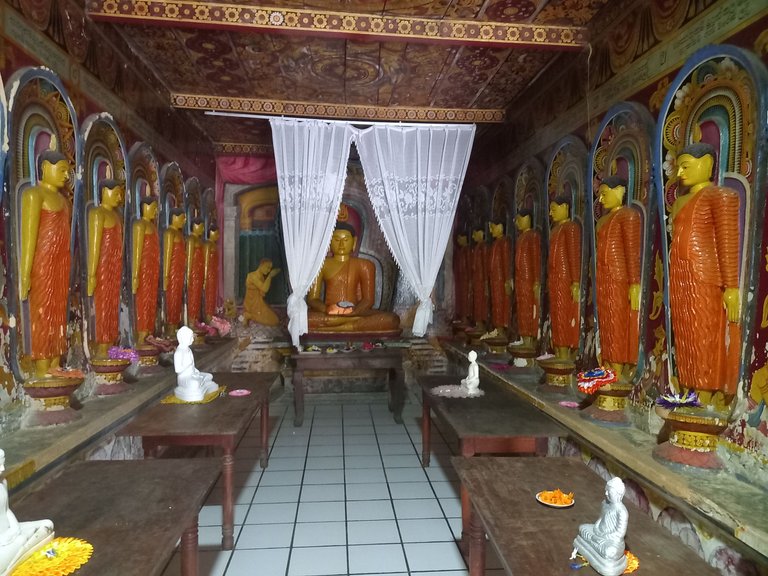
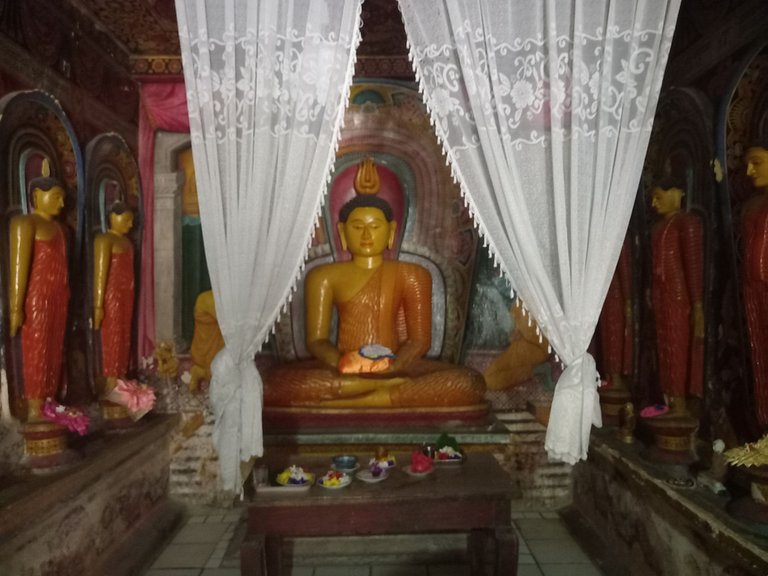
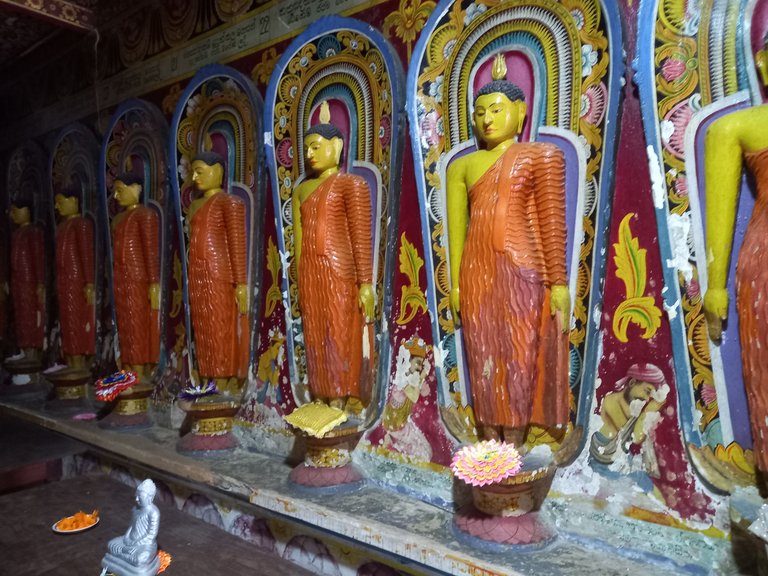
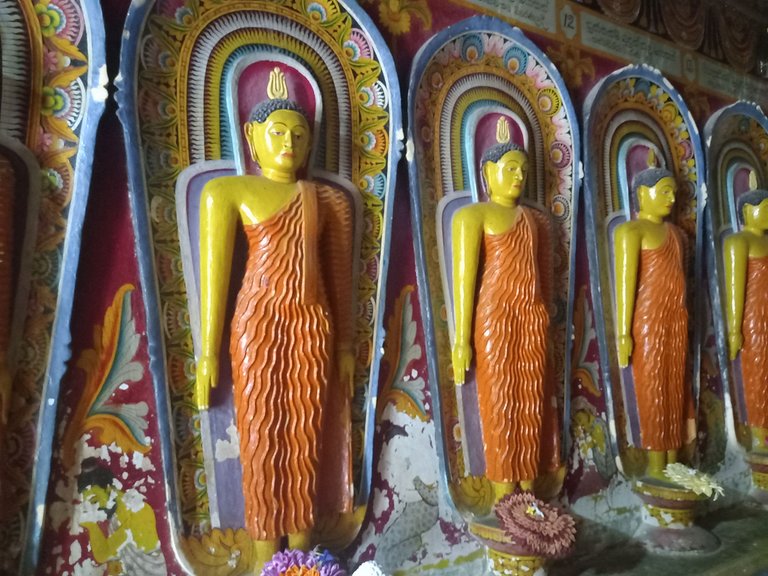
Then we entered the beautiful and attractive place of the temple. This venerable place on a tiled floor is truly breathtaking. Many Buddha statues can be seen in every direction of this temple. Yellow bodies are given a bright color after wearing orange robes. The architects of the past have taken great pains to highlight the shapes of the robes. A small white Buddha statue can also be seen in front of those Buddha statues. There are various paintings behind the Buddha statue highlighted on the wall itself. Unfortunately, nowadays these wall paintings are starting to fall apart. If the restoration works are not started now, the paintings may be destroyed as if they did not exist.
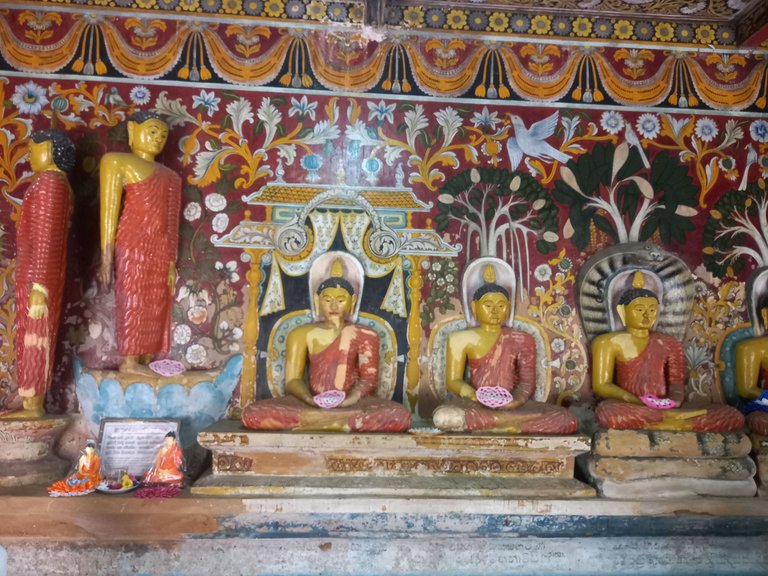
It is a serious crime to let the past resources of our country, rich in ancient architecture and art, be destroyed. Not only the paintings, but some Buddha sculptures are also losing layers of paint.
 |  |
|---|---|
 | 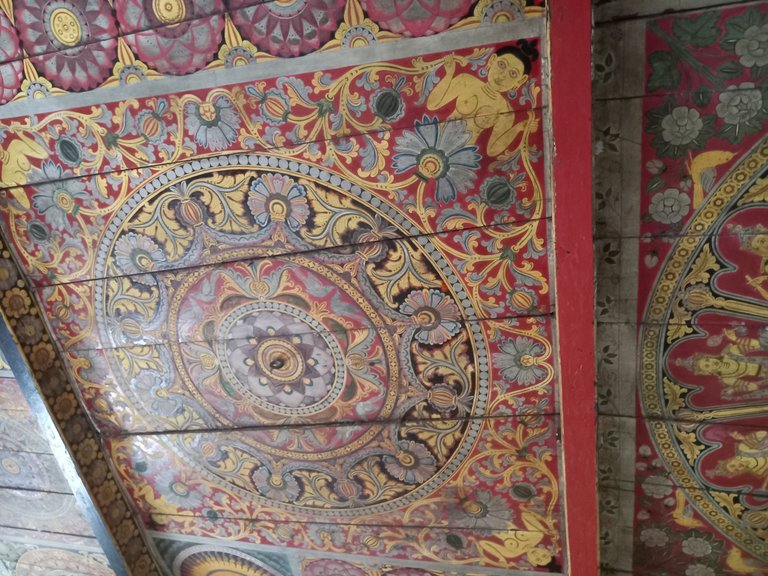 |
The Buddhist symbols on the upper wall of the temple, which includes Buddha sculptures, are meaningful. There is a difference in lotus flower shape. This shows the unique quality of the art of that time which was born in connection with different cities. Several hawk-like birds called Gurulas have been photographed. Although their appearance is frightening, it has been created imaginatively.
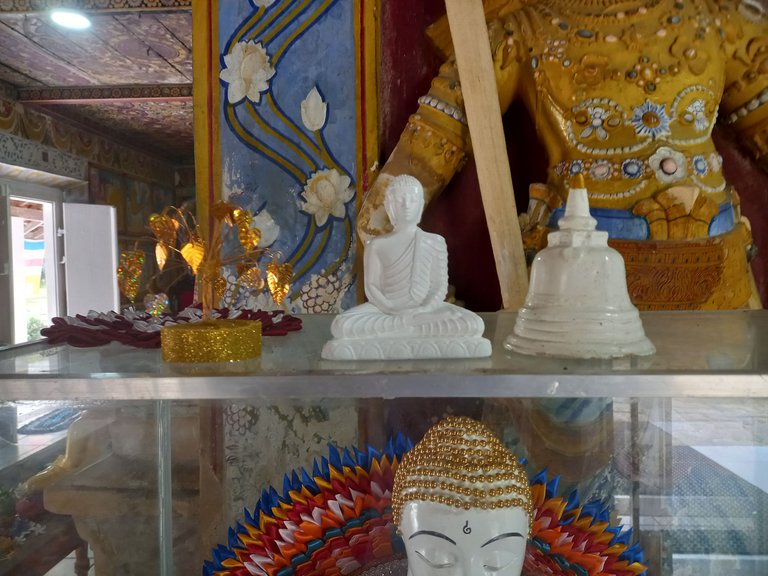
Sri Lankan Buddhists reverently worship Dagaba, Bodhi tree and three small statues of Buddha kept in the same place.
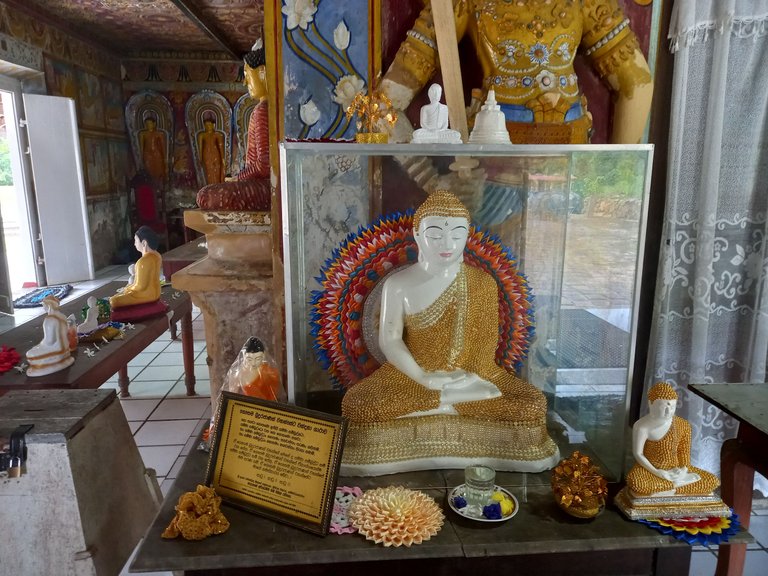
A statue of Buddha in a robe made of glittering beads was encased in glass. Behind it is established a beautiful weave containing all the colors of the Buddhist flag. The verse of worship to Buddha was displayed in Sanskrit and Sinhala.
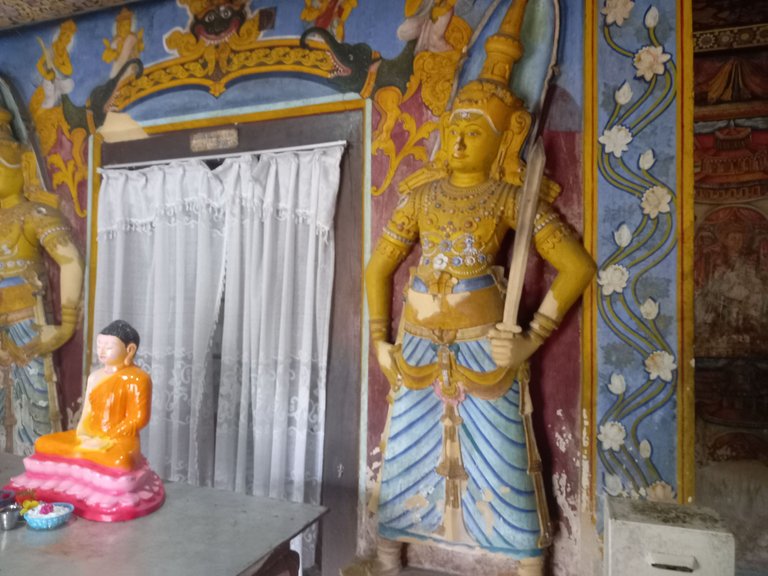
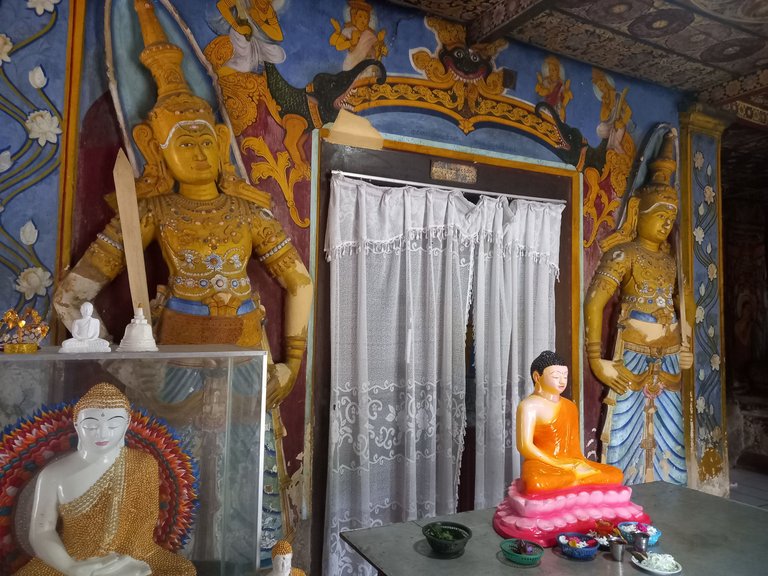
It is said that it was started in 2419 Buddha year and completed in 2424 Buddha year. The name of the person who tiled the roof has been erased, but the last part is displayed as Mr. De Silva. On the wall were carved two sculptures of gods holding swords to protect Buddhism. These architectural features are commonly seen in old temples. A scary demon was also drawn here with two imaginary animals similar to the head of an elephant for protection.
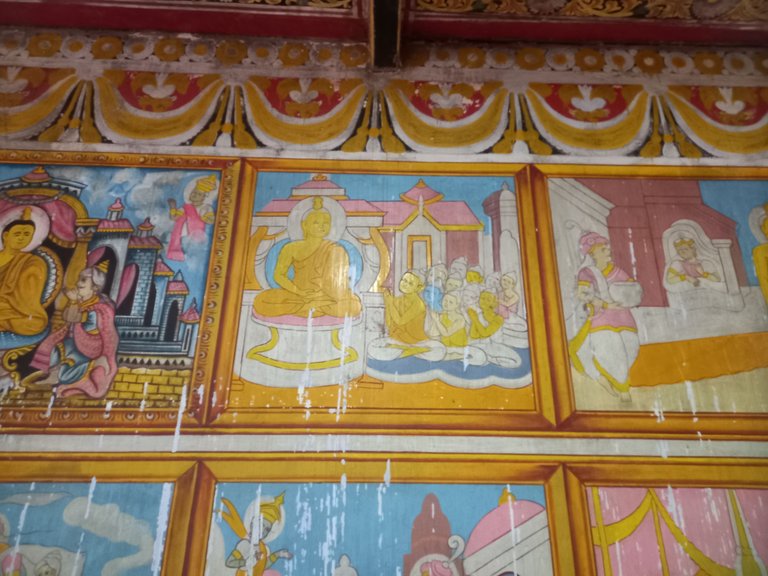 | 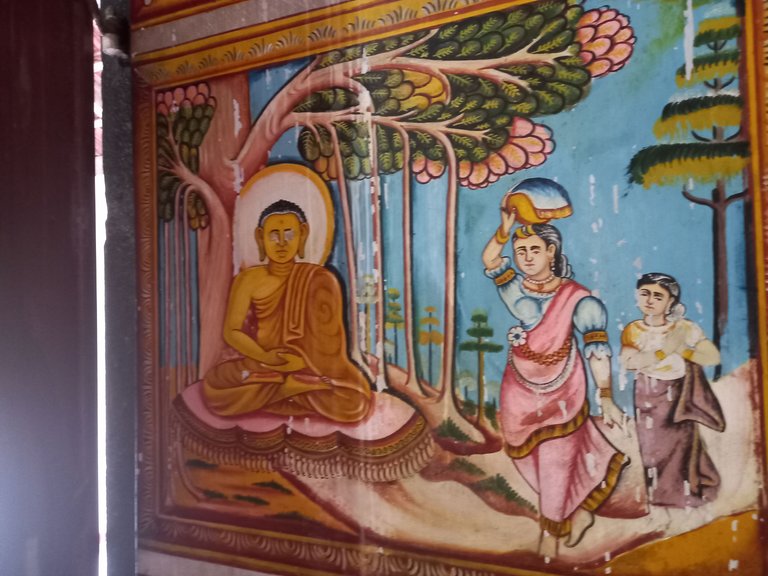 |
|---|
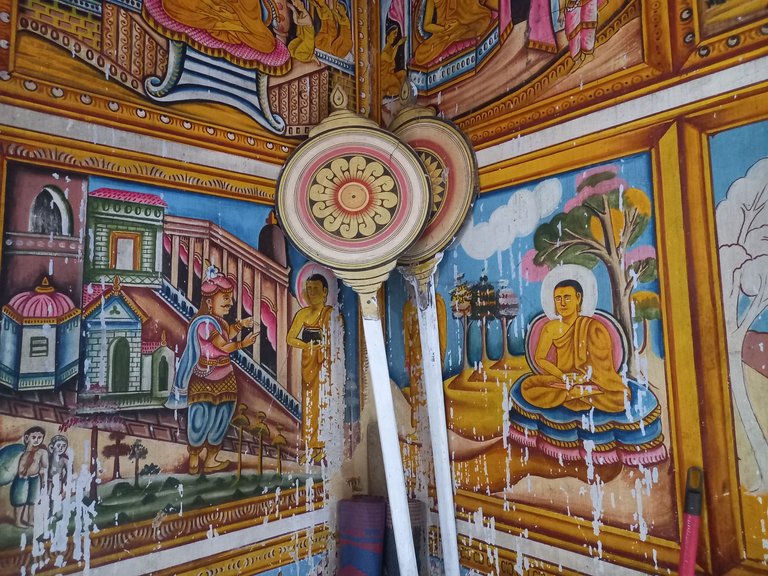
Paintings from the Kandy period with themes of Buddha's stories can be seen here. Unfortunately, those wall paintings are also going to the mouth of destruction. In fact, there are many examples that we can take from these murals. The excellence of Kandy era art is evident from these paintings.
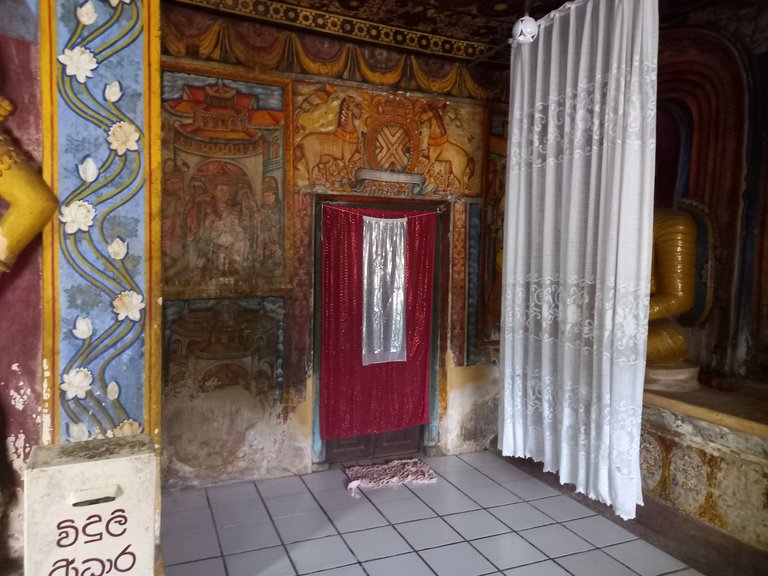
My attention was drawn to a mural with two horses in a similar shape to the architecture of another country. Looking at the other paintings nearby, it appeared that the mural art of another country. But I can't tell which style it belongs to.

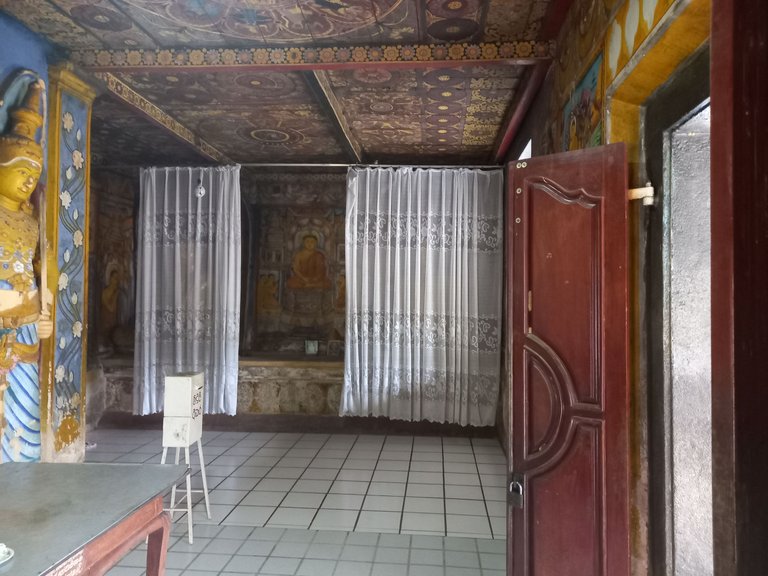
Although no particular architectural feature can be seen on the side door, the floral vine design on the sides with a demon on the wall above it was attractive. Creative shapes can be seen at the front door. It is made of strong wood.
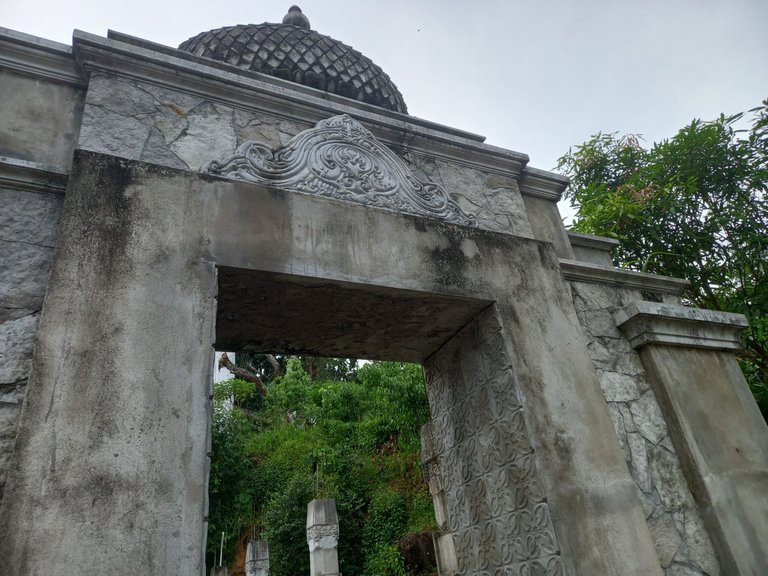
The entrance to the shrine, which is worshiped by Hindus as well as Buddhists, has recently been repaired but has cultural carvings that were used in the past. At the top is a dagaba arranged in a shiny shape. There is another carving at the bottom, and floral shapes are also carved on the inside.
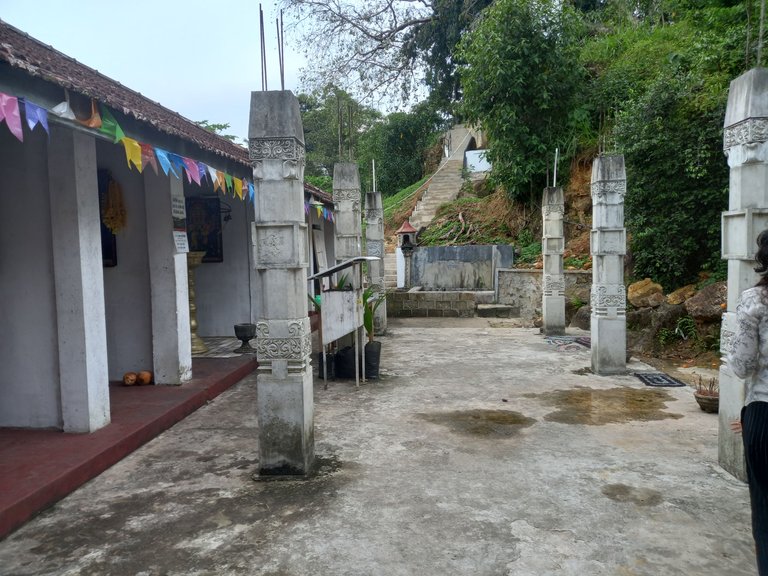
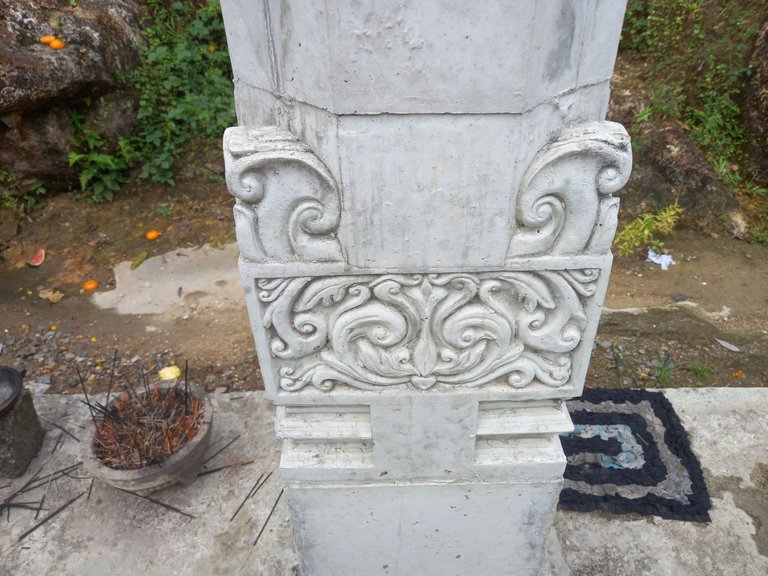
Here you can see some recently restored pillars that were installed in the past. If you go near them and observe them, you can see carvings of different shapes. Although these carvings are different from each other, they are high in creativity. Vine carvings with flowers are a common feature found in many temples in Sri Lanka. One can observe how these carved pillars are placed as supports to form a building.
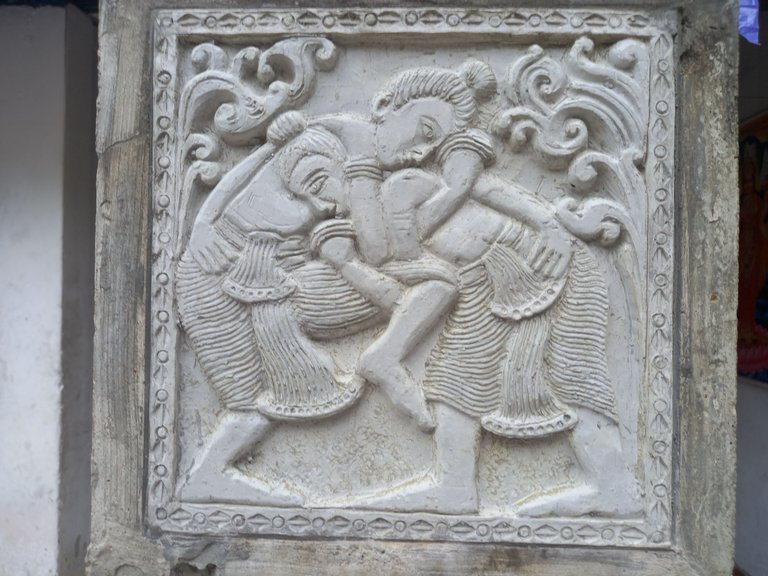 |  |
|---|---|
 |  |
The battle of Angampora where two men are fighting, the imaginary animal approaching the figure of a lion, the figure of a woman who looks like a goddess and the fight between two peacocks are carved in a very unique way on these pillars.


The bell pillar was on a small hill to announce an emergency, a religious ceremony, etc.
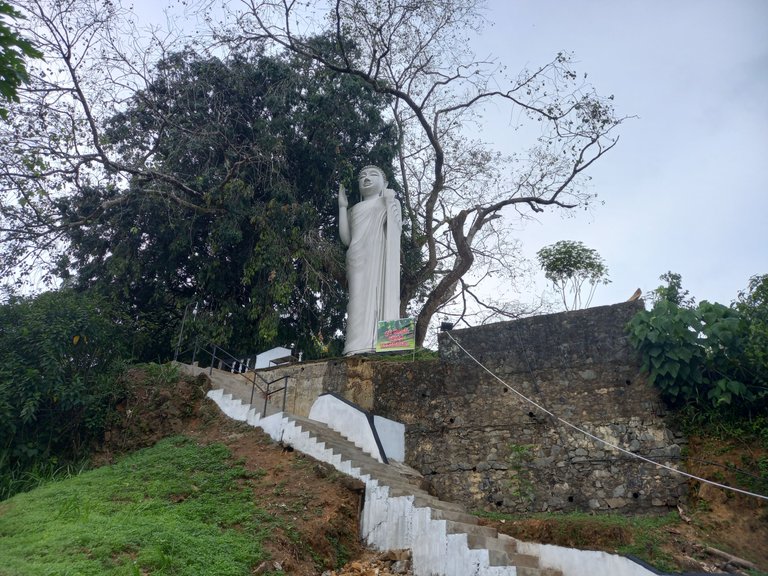
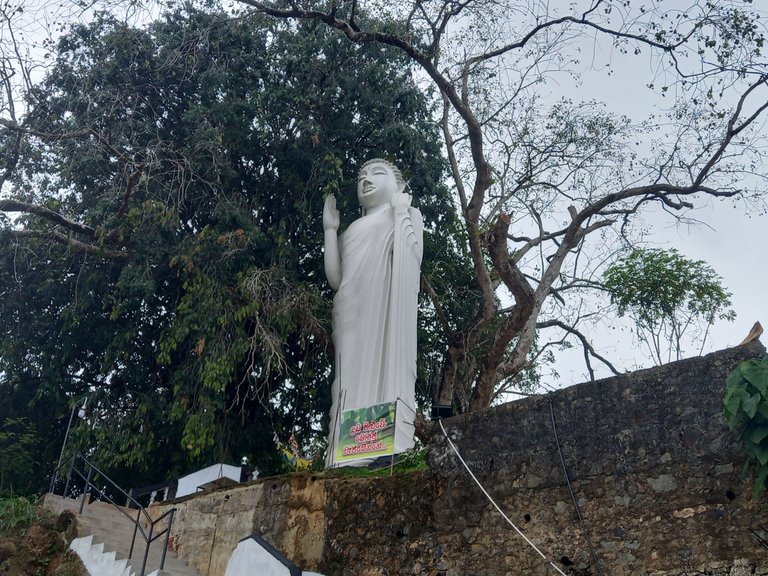
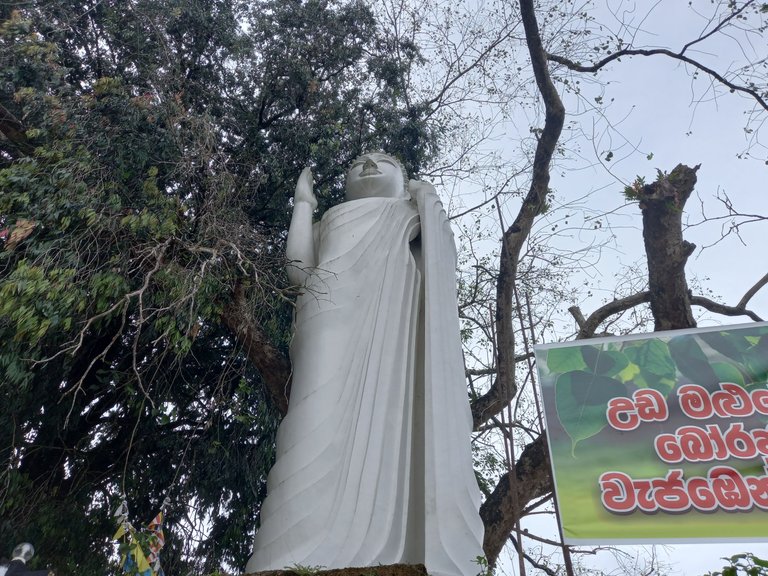
*The white Buddha statue visible from the Galle-Akurassa main road was built on a hill in the temple grounds. It is taller. You can climb the stairs and jump right next to it.
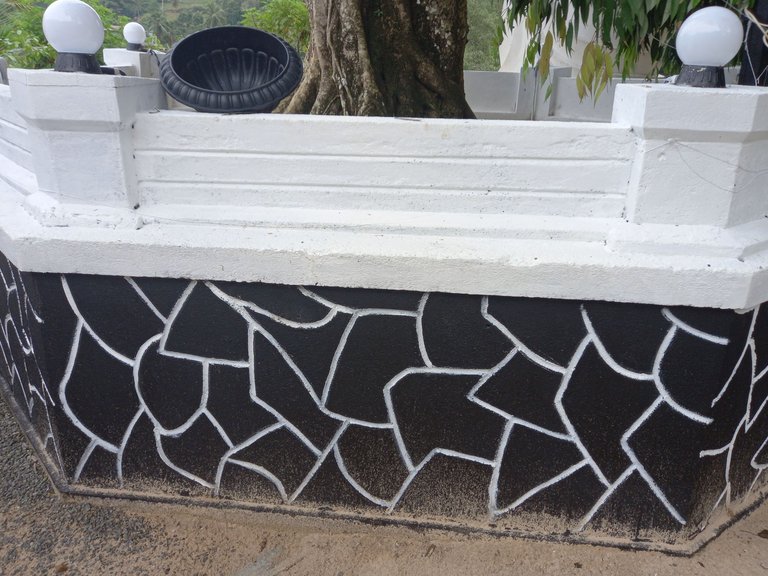
Although it is said that there were many Na trees here in the past, only one tree can be seen today. That old tree provides shade and coolness to the Buddha.
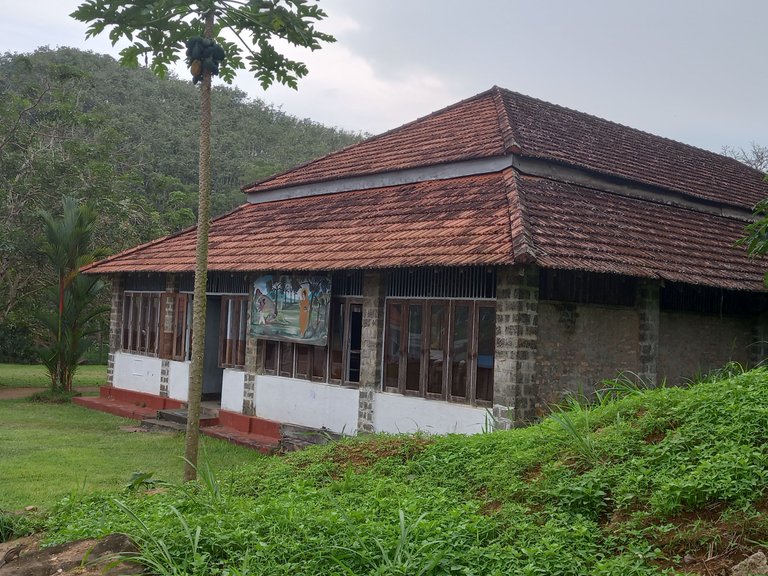
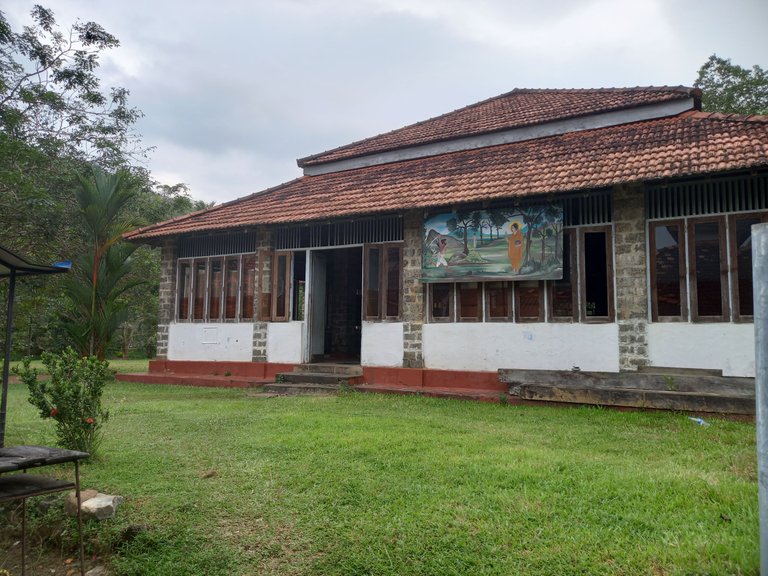
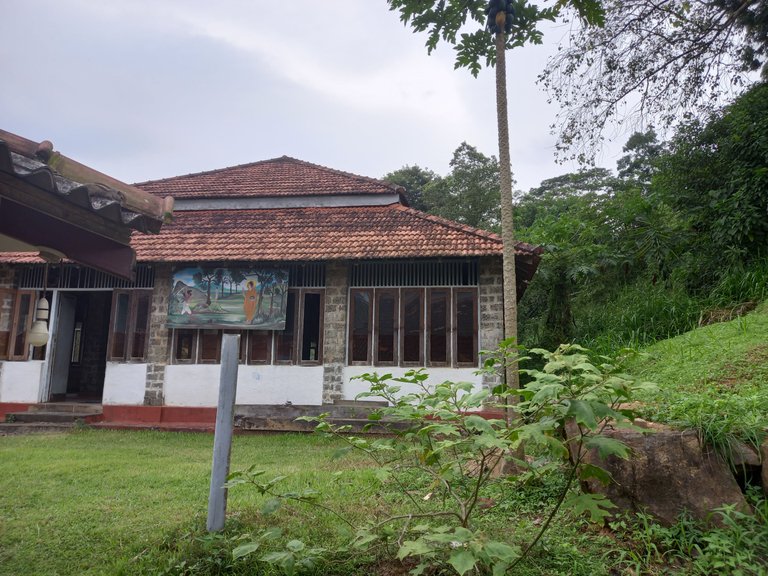
Adjacent to the temple grounds was a building with an attractive architecture that provides education to Dhamma school children. It is said that this was used as a library at that time.
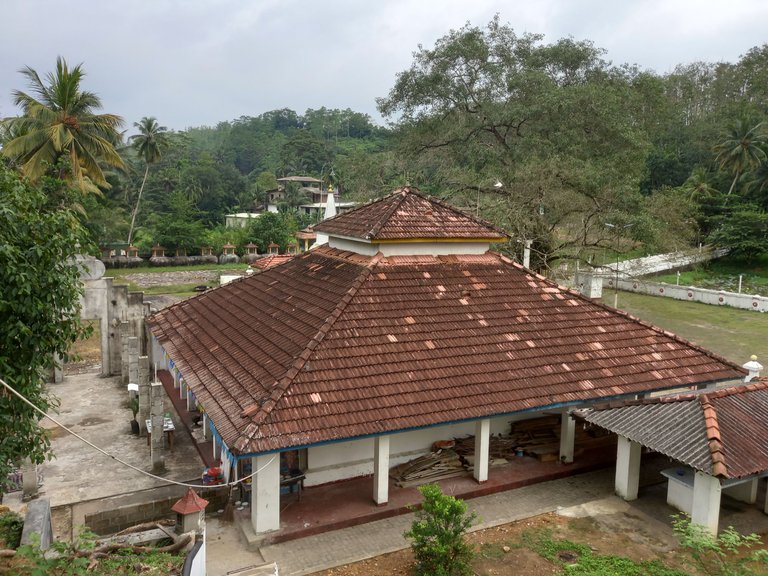
One side of the temple is covered in the photo taken from the mountain near the Buddha statue. There the architecture of the building can be seen clearly. This ends the information of another old temple in Sri Lanka explored in this way.
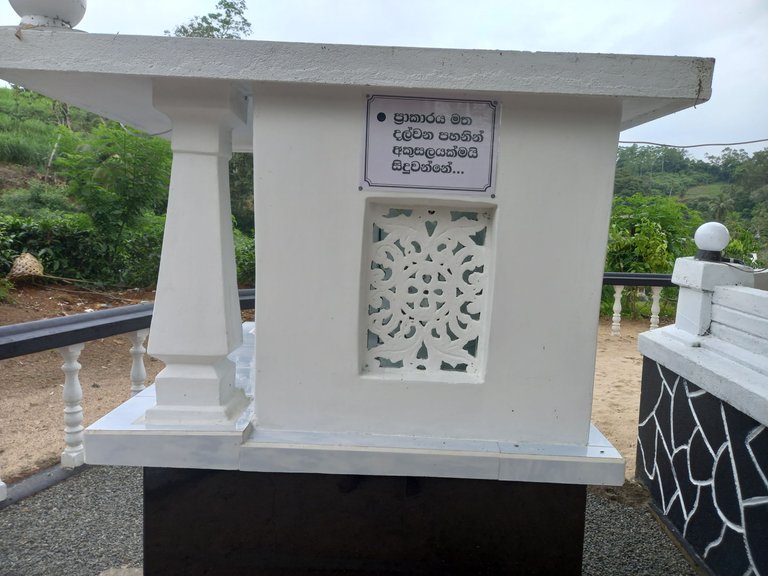

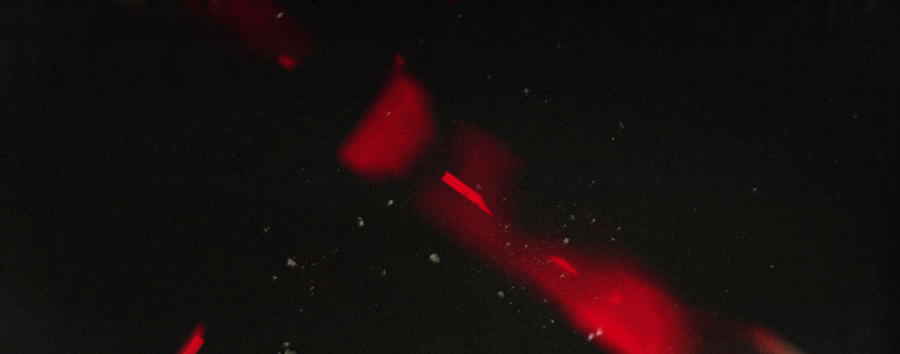
Congratulations, your post has been added to Pinmapple! 🎉🥳🍍
Did you know you have your own profile map?
And every post has their own map too!
Want to have your post on the map too?
https://twitter.com/1260211375881814016/status/1612796643258126336
The rewards earned on this comment will go directly to the people( @madushanka ) sharing the post on Twitter as long as they are registered with @poshtoken. Sign up at https://hiveposh.com.
The sense of peace you must feel in this ancient temple must be wonderful. The most important tool to undertake a trip is optimism, this way all the circumstances around you will be positive. Learning about this ancient Buddhist architecture is a very enriching experience, it is a beautiful way to travel to the past, where this temple was an important pillar of spiritual connection.
Thanks for sharing, happy afternoon @madushanka
Yeah I got big mental peace while staying these ancient temple land. Buddhist architecture is amazing and attractive if you can learn it.I have little bit knowledge about it and necessary to learn more. When I see some oldest ornament anywhere my mind goes to the past. It's common thing to anyone. Thanks for visiting my post @kristal24. Have a successful day.
!ALIVE
@kristal24! You Are Alive so I just staked 0.1 $ALIVE to your account on behalf of @madushanka. (1/10)
The tip has been paid for by the We Are Alive Tribe through the earnings on @alive.chat, feel free to swing by our daily chat any time you want.

Beautiful ancient temple! The entrance door looks majestic and has unique design. The carvings are amazing. The roof is magnificent.
The "Bo Tree" is really huge and looks wonderful and sacred. The words "Bo" and "Pooja" similar to the words in the Thai languages.
The white pagoda is beautiful with awesome style. It's amazing how the booths of the twenty eight Buddha were built on the rocks.
All Buddha statues are magnificent and the wall paintings and arts are marvelous.
The white Buddha statue on the hill is really big and looks outstanding.
The information you provided are very interesting and your pictures are beautiful. Thanks so much for sharing.
Of course Paragoda ancient temple has unique and own designs of architecture. Entrance and temple building's roofs very nicely built using recent tiles.
Ohh. I have heard some thai words and sinhala words little bit similar and easily pronounce. You have visited my blog clearly and then explained every objects in this temple awesomely. Thanks for encouraging feedback friend @tangmo. Have a nice day.
!ALIVE
@tangmo! You Are Alive so I just staked 0.1 $ALIVE to your account on behalf of @madushanka. (2/10)
The tip has been paid for by the We Are Alive Tribe through the earnings on @alive.chat, feel free to swing by our daily chat any time you want.

My pleasure! Many thanks for your wishes! Have a wonderful day, my friend! 😊
Hello @madushanka. Fantastic design tour! I've definitely learned a lot from your post about Buddhist architecture. Seems like there are several symbolic definitions and traditional beliefs portraying their religious culture, even including trees. 😊
What are some of the most distinctive or most common features of Buddhist architecture, apart from the presence of Buddha statues?
Hello dearest friend @storiesoferne, I'm glad to hear you have learnt something about Buddhits architecture in Sroi Lanka via my content. Apart from Buddha statues, wood carvings and carvings in stone pillars are the most common features of our Buddhist architecture. Apart from that, stupas can also be seen. But the stupas are created in accordance with different shapes. When I have the opportunity to visit the Polonnaruwa area of Sri Lanka, I will present the unique carving techniques of stone pillars. Generally, different architectural elements can be seen between the temples. We hope to present them to the members of this community in the future.
Yes I agree. Carvings, sculptures, and bas reliefs seem to be the typical elements present in Buddhist architecture. What overwhelms me though are the number of symbolic characters and figures on them thus arousing more of my curiosities. Nevertheless, I look forward to more stories about these remarkable details which I'm pretty sure will be interesting. Thank you dear friend @madushanka and all the best to your future architectural adventures! 🙏😊
Yes of course. I'll share more stories about temple architectural features later. Sure it will more interesting to architectural lovers. Appreciate your encouragement.
beautiful temple, wish i can visit there.
Exactly, When you'll come to Sri Lanka someday you can visit.
Beautiful images!
Congratulations @madushanka! We are delighted to inform you that your outstanding publication was specially selected to be part of our Curated Content Catalog and was awarded RUNNER-UP in Architecture Anthology™ 11. More power!
Thank you for subscribing to Architecture+Design, an OCD incubated community on the Hive Blockchain.
Appreciate you were selected my next contentto runner up in in Architecture Anthology™ 11.
Thank you dear @madushanka for your neverending appreciation and support. Until your next epic post! 😀